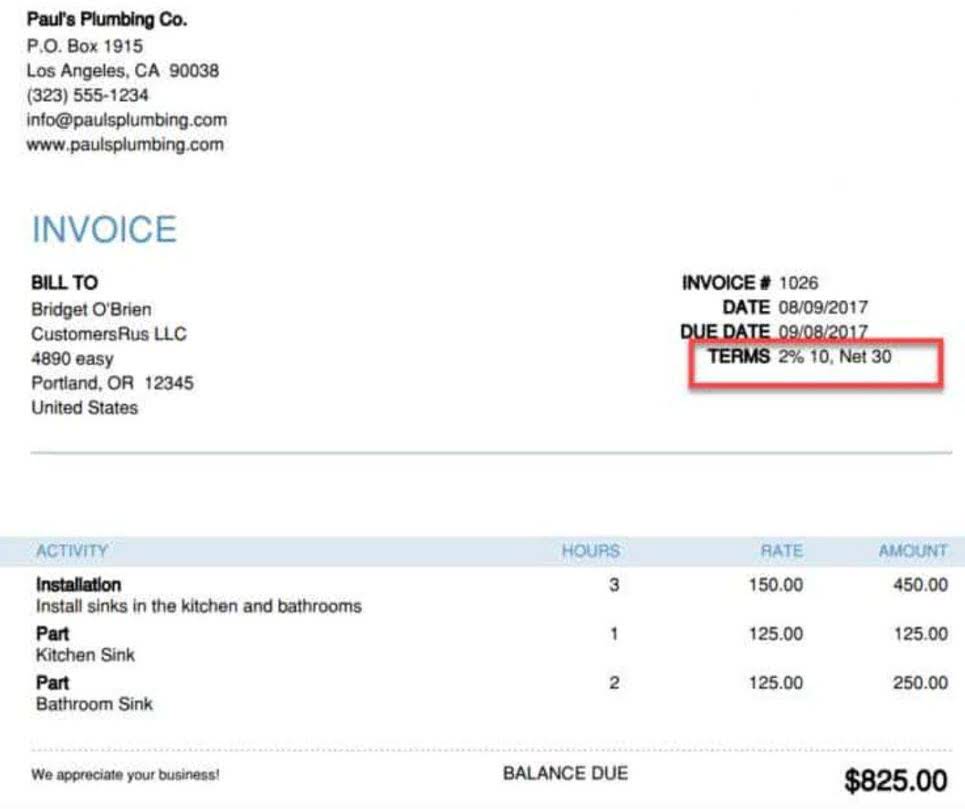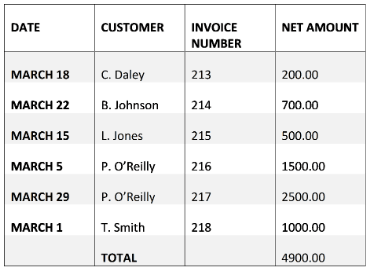Content

From the example above, Sears is shown to have a much higher degree of leverage than Disney and Chipotle and, therefore, a lower degree of financial flexibility. With more than $13 billion in total debt, it is easy to understand why Sears was forced to declare Chapter 11 bankruptcy in October 2018. Investors and creditors considered Sears a risky company to invest in and loan to due to its very high leverage. A company with a high degree of leverage may thus find it more difficult to stay afloat during a recession than one with low leverage.
How do I calculate a ratio in Excel?
Calculate Ratio Formula: To calculate the Ratio in excel, the Shop 1 will be divided by GCD and the Shop 2 will be divided by GCD. You can place a colon between those two numbers. Example: To see the ratio, enter this formula in cell E2 = B2/GCD(B2,C2)&”:”&C2/GCD(B2,C2).
Trend analysis is looking at the data from the firm’s balance sheet for several time periods and determining if the debt-to-asset ratio is increasing, decreasing, or staying the same. The business owner or financial manager can gain a lot of insight into the firm’s financial leverage through trend analysis. Including preferred stock in total debt will increase the D/E ratio and make a company look riskier. Including preferred stock in the equity portion of the D/E ratio will increase the denominator and lower the ratio.
Long Term Debt To Asset Ratio
More importantly, it’s a measurement of the shareholders’ ability to cover your outstanding debts if you go through a downturn. Is calculated by dividing its total debt by the shareholders’ share. These figures factor heavily into a company’s financial statements, featured on the balance sheet. Its close cousin, the debt-to-asset ratio uses total assets as the denominator, but a D/E ratio relies on total equity. This helps the ratio emphasize how a company’s capital structure skews either towards debt or equity financing. Examples of long-term debt include mortgages, bonds, and bank debt. Just like the standard debt to equity ratio, investing in a business is riskier if it has a high ratio.
Debt to Asset Ratio Formula Calculate Debt to Total Asset Ratio (Example)https://t.co/lbjwvttblt#DebttoAssetRatioFormula pic.twitter.com/SDl13qezVN
— Dheeraj (@dheerajvaidya) March 2, 2019
Companies can deal with debt liabilities through any given set of cash flows and leverage in order to increase their returns on the stock. Where we see this ratio used is in assessing the company’s overall financial leverage. Gauging your debt-to-equity ratio gives you an idea of how much of your company is finances through debt and wholly-owned funds.
Business Checking Accounts
Debt to asset ratio is useful for determining risk based on a business’s financial leverage and solvency. But it’s most useful as a measure of comparison, either with competitors or with the company’s recent past.
How to calculate your debt to asset ratio https://t.co/9JsKDp7hw8 #Entrepreneur via @ramit pic.twitter.com/tIO3TwR95s
— WithoutCode (@AppWithoutCode) December 9, 2017
Divide the result from step one (total liabilities or debt—TL) by the result from step two (total assets—TA). In this example for Company XYZ Inc., you have total liabilities of $814 million and total assets of $2,000. A higher D/E ratio may make it harder for a company to obtain financing in the future. This means that the firm may have a harder time servicing its existing debts. Very high D/Es can be indicative of a credit crisis in the future, including defaulting on loans or bonds, or even bankruptcy. If a company has a negative D/E ratio, this means that the company has negative shareholder equity. In other words, it means that the company has more liabilities than assets.
How To Calculate A Debt Ratio
The calculation considers all of the company’s debt, not just loans and bonds payable, and considers all assets, including intangibles. It is difficult to compare this ratio in industry groups where the different ideal debt amount is higher or lower than normal. In some industries, it makes more sense to operate using more debt than others. Are greater than the actual revenue growth generated by the company, stock prices can and often do fall. Debt costs aren’t all the same and will often vary based on specific market conditions. With that said, it may not always be obvious that unprofitable borrowing is taking place.
- Business deploys capital to either purchase Assets (Current or non-Current) or to fund its operational expense.
- To calculate this, simply subtract the value of the intangibles from total assets and then divide as before.
- Banks and other lenders look at this number to determine how much of a risk you are to lend to.
- John’s Company currently has £200,000 total assets and £45,000 total liabilities.
- This number compares your gross monthly income to your monthly debt.
- Large manufacturing and stable publicly traded companies have ratios between 2 and 5.
- In turn, if the majority of assets are owned by shareholders, the company is considered less leveraged and more financially stable.
When using the D/E ratio, it is very important to consider the industry in which the company operates. Because different industries have different capital needs and growth rates, a relatively high D/E ratio may be common in one industry, while a relatively low D/E may be common in another. Gearing ratios constitute a broad category of financial ratios, of which the D/E ratio is the best example. For example, a prospective mortgage borrower who is out of a job for a few months is more likely to be able to continue making payments if they have more assets than debt. This is also true for an individual applying for a small business loan or line of credit. If the business owner has a good personal D/E ratio, it is more likely that they can continue making loan payments while their business is growing.
Comparative Ratio Analysis
Calculating your business’s debt to asset ratio requires finding the exact numbers for a lot of blank formula spaces, such as the company’s total liabilities and assets. Gather this information before beginning work on figuring out your debt to asset ratio. Once you have these figures calculating through the rest of the equation is a breeze. Alternatively, a low debt to asset ratio indicates that the company is in strong financial standing because they have fewer liabilities and more total assets. This presents many positive aspects for the business, such as being perceived as less risky by lenders.
How do you calculate the debt-to-equity ratio? – Investopedia
How do you calculate the debt-to-equity ratio?.
Posted: Sat, 25 Mar 2017 07:29:36 GMT [source]
If your business has a negative debt to equity ratio, you might have a hard time finding financing in the future due to the amount of debt you already use to fund your company. The answer to this is not to jump into more equity financing as this can cause issues with the operations of your business. Extending more equity to new shareholders can cause your company to pursue a different direction as a contingency of accepting their financing. Let’s say a software company is applying for funding and needs to calculate its debt to equity ratio. Its total liabilities are $300,000 and shareholders’ equity is $250,000. In some instances, a high debt ratio indicates that a business could be in danger if their creditors were to suddenly insist on the repayment of their loans. To find a comfortable debt ratio, companies should compare themselves to their industry average or direct competitors.
A Note On Debt To Equity Ratio
It shows the relation between the portion of assets financed by creditors and the portion of assets financed by stockholders. As the debt to equity ratio expresses the relationship between external equity and internal equity (stockholder’s equity), it is also known as “external-internal equity ratio”.
I will put up a screenshot of the company’s balance sheet and highlight the inputs for our ratio. Repaying their debt service payments are non-negotiable and must be made under all circumstances. Other debts such as accounts payable and long-term leases have more flexibility, with the ability to negotiate terms in the case of trouble. A simple rule regarding the debt to asset ratio; the higher the ratio, the higher the leverage. Debt can lead to big problems if it gets out of hand, and that is why it is important to analyze the company’s debt situation and determine the potential impact, good or bad. Debt is relatively less costly compared to equity for the Business.
Times interest earned , or interest coverage ratio, is a measure of a company’s ability to honor its debt payments. It may be calculated as either EBIT or EBITDA, divided by the total interest payable. On the other hand, creditors want to determine the amount of debt a company already has. That’s specifically because they want to find information concerning collateral and the firm’s financial capability of making repayments. In the case in which a firm has already leveraged all its assets and isn’t capable of addressing its monthly payments, a lender will be less likely to extend a line of credit. The Petersen Trading Company has total liabilities of $937,500 and a debt to equity ratio of 1.25. For example, a company with $2 million in total assets and $500,000 in total liabilities would have a debt ratio of 25%.

All things being equal, a higher debt to assets ratio is riskier for equity investors; debt holders often have seniority over company assets during bankruptcy. A ratio of 1 would indicate a company is 100% backed by debt, whereas a ratio of 0 means the company is carrying no debt on its books. Times Interest Earned or Interest Coverage is a great tool when measuring a company’s ability to meet its debt obligations. When the interest coverage ratio is smaller than 1, the company is not generating enough cash from its operations EBIT to meet its interest obligations. The Company would then have to either use cash on hand to make up the difference or borrow funds. Typically, it is a warning sign when interest coverage falls below 2.5x. The firms HL and LL are identical except for their leverage ratios and interest rates they pay on debt.
What A Good Debt To Asset Ratio Is; How To Calculate It
But what constitutes a “good” debt ratio really depends on your industry. Equity, for the purpose of calculating the debt-equity ratio, should include equity shares, reserves and surplus, retained profit, and subtract fictitious assets and accumulated losses.
- For example, businesses that offer internet services generally don’t require a lot of debt up front to start.
- The reason for positive reactions to lower ratios is the ability for companies to borrow more money.
- If XYZ’s industry average is 40%, then XYZ is less leveraged than most of its peers, and creditors will likely offer XYZ lower interest rates, since the company is likely to pay off its debt.
- A company with a high debt ratio could be in danger if creditors start to demand repayment of debt.
The information that you need will be labeled as total liabilities or total debt. This represents the sum of the company’s short-term and long-term liabilities. Finally, the formula of debt to asset ratio can be derived by dividing the total debts by the total assets . For example, a company may be calculate debt to asset ratio highly leveraged and finance a lot of its assets through debt. But if it uses that money in intelligent ways, then the debt to asset ratio will start to shrink. With all the monthly data neatly together, he adds the long-term debt, bank loans, and wages payable to get a total liability of $43,000.
Hence, it is considered to be a risky investment, and the banker might reject the loan request of such entity. Further, if the ratio of a company increases steadily, it could be indicative of the fact that a default is imminent at some point in the future. For example, if a company’s debt to asset ratio is greater than 0.5, most of its assets are financed through debt.

If an organization has a debt to asset ratio of 0.973, 97.3% of it is covered on borrowed dollars. The only math you’ll need to do is a bit of division, but you first need to figure out what numbers to plug into the equation.
The inclusion of preference share is debatable because nature is similar to debt as it creates a fixed obligation. Whereas, inclusion is strengthened by the fact that it has ownership rights and does not possess the preferential right of payment like the debts have. Here again, the objective of calculating the ratio comes under the picture. For example, businesses that offer internet services generally don’t require a lot of debt up front to start. That means they’ll typically have lower debt to asset ratios on average. When you’re a business (i.e. you have your own business or side hustle), your debt to asset ratio represents the total amount of debt you owe compared to your total amount of assets.
Is 0.7 A good debt ratio?
As it relates to risk for lenders and investors, a debt ratio at or below 0.4 or 40% is considered low. This indicates minimal risk, potential longevity and strong financial health for a company. Conversely, a debt ratio above 0.6 or 0.7 (60-70%) is considered a higher risk and may discourage investment.
If he doesn’t do anything to alter the trajectory of his company’s finances, it will go bankrupt within the next couple of years. A resulting value over one indicates that liabilities are being used to fund a business entirely and that the company owes more than it’s taking in. It’s clear that this is the case with Christopher’s bakery, Lucky Charms.
Most of the work has been done, and all that’s left is plugging the numbers into the formula and solving to find the debt to asset ratio. Put the total company liabilities on the top of the equation and the assets on the bottom.
Author: Barbara Weltman

